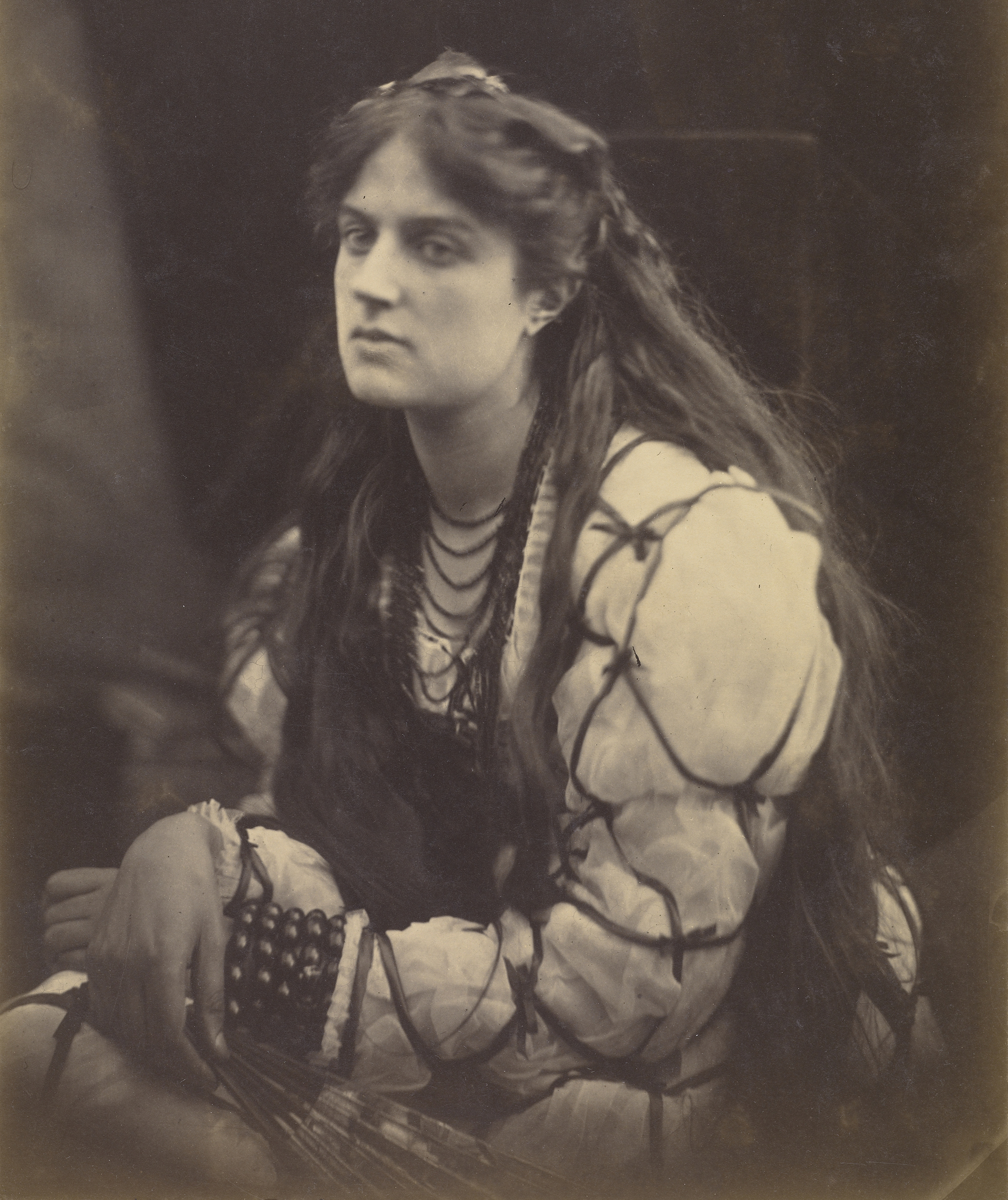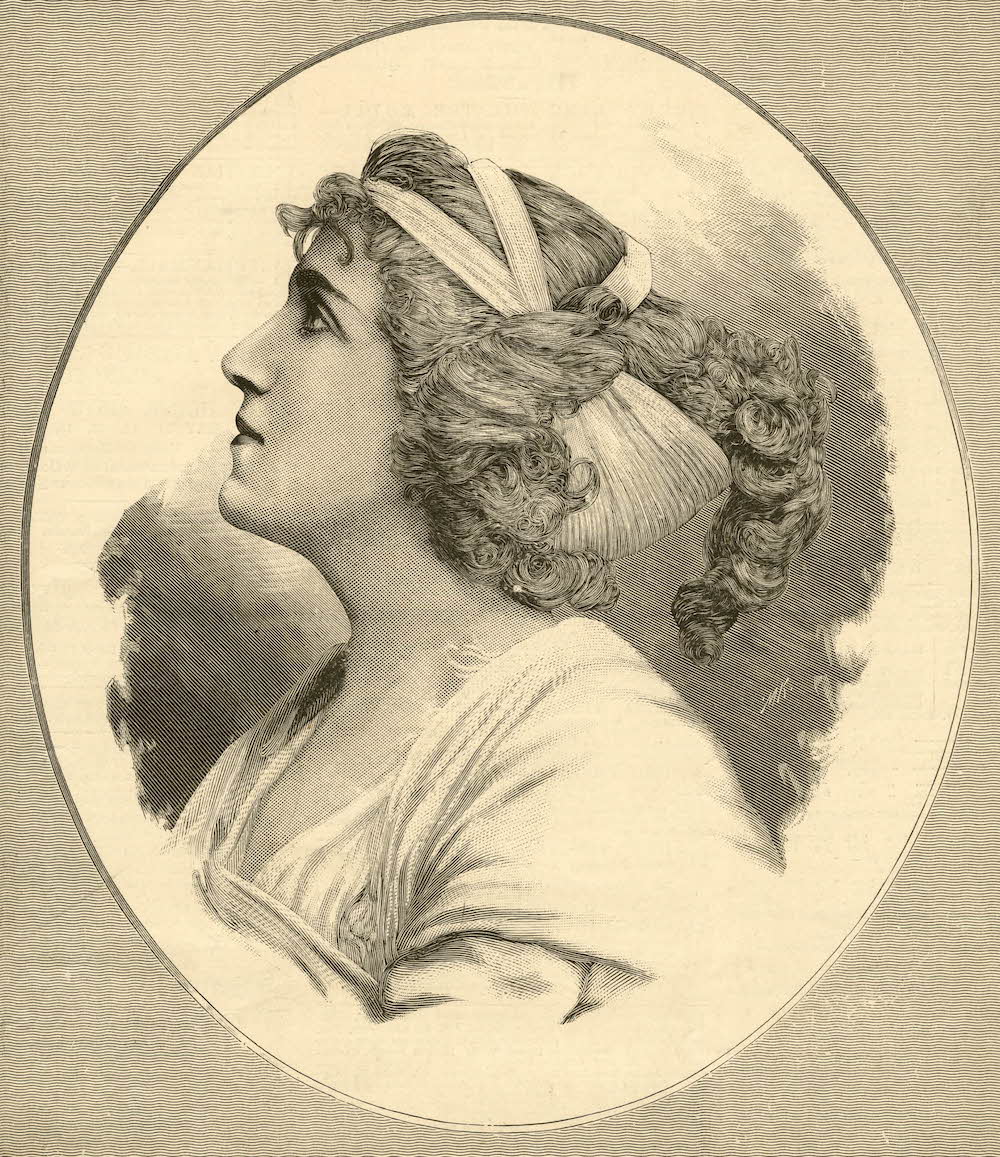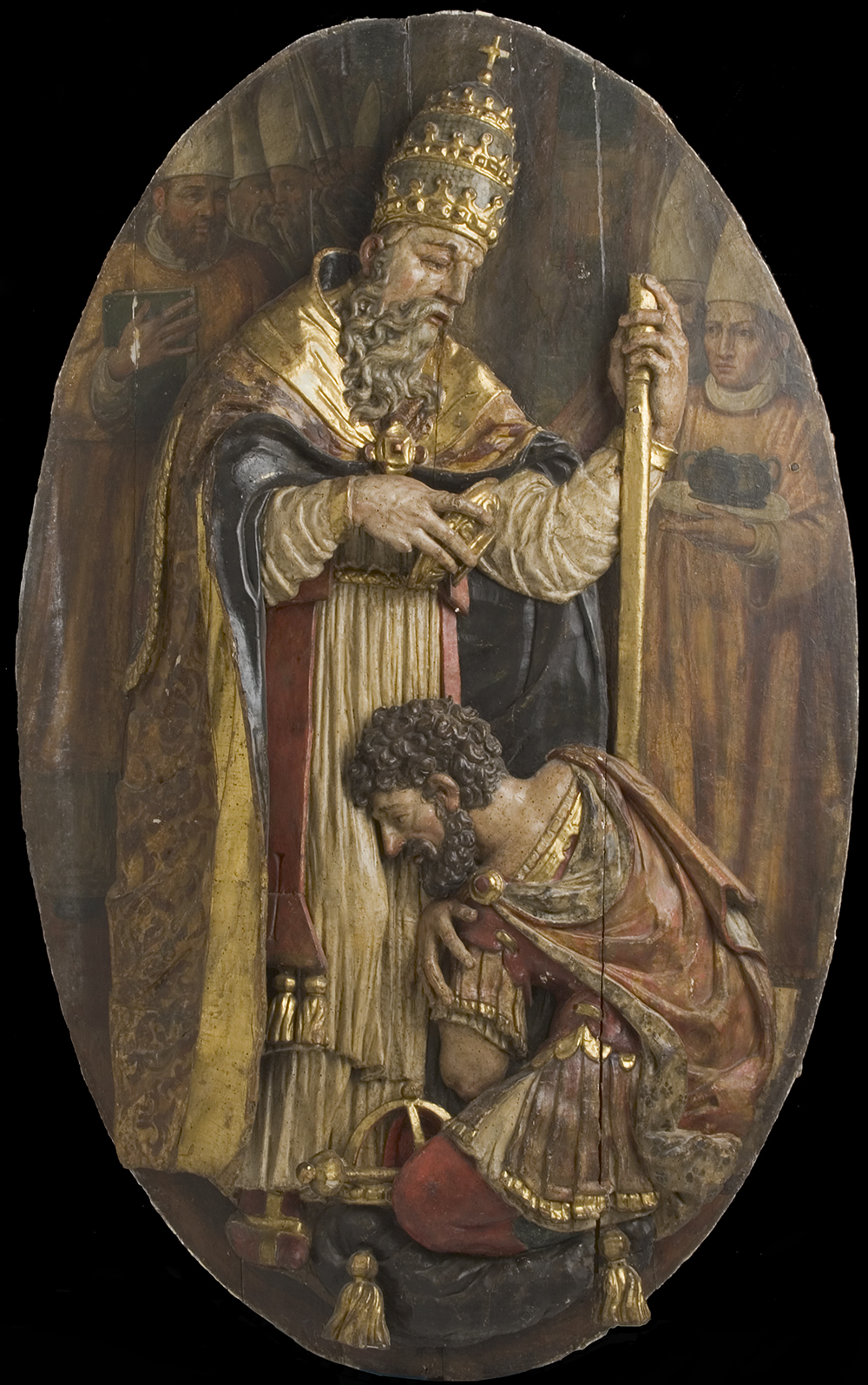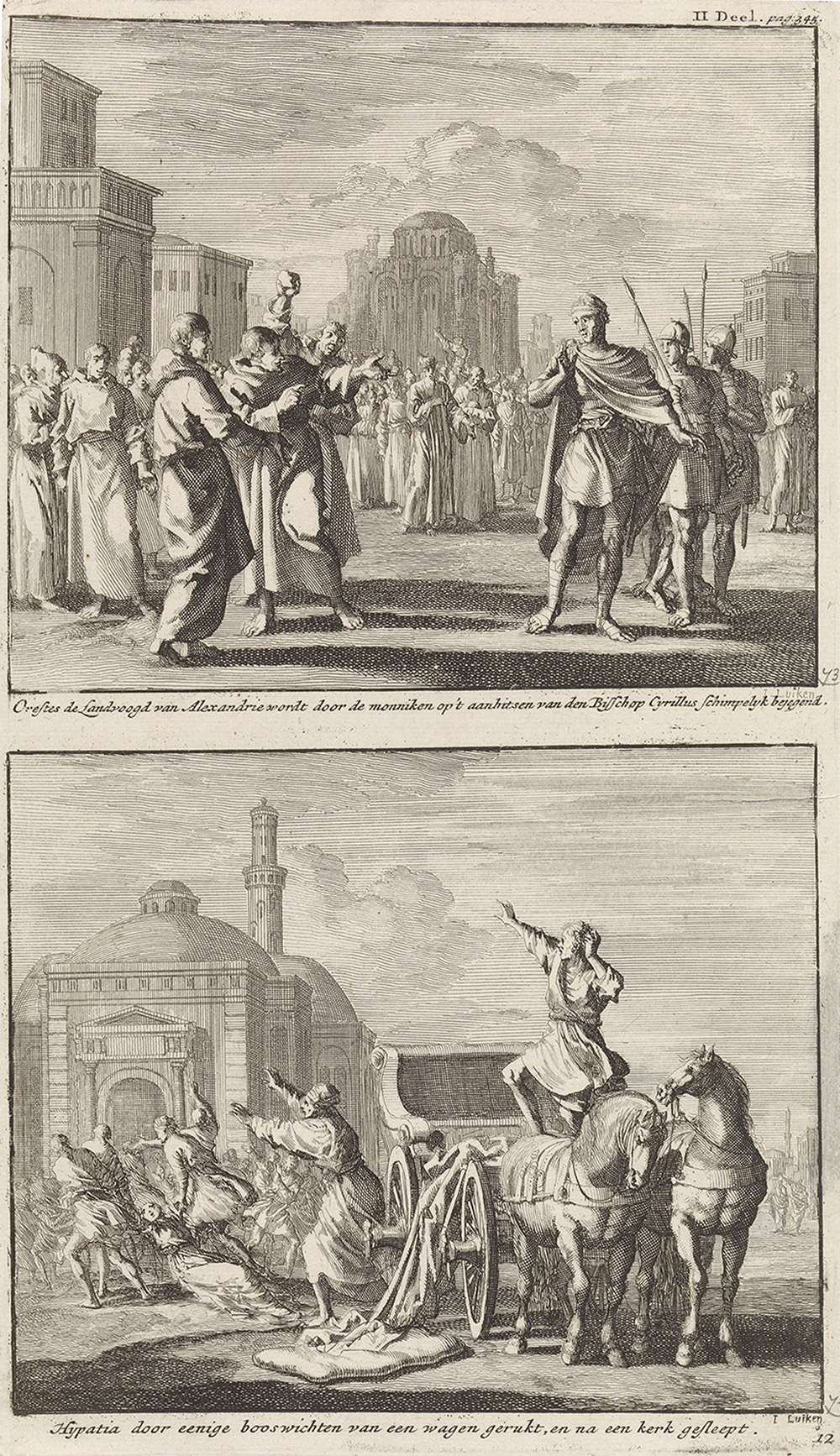
Hypatia, by Julia Margaret Cameron, 1867. The J. Paul Getty Museum. Digital image courtesy of the Getty’s Open Content Program.
One early spring day during the year 415 in the city of Alexandria—the intellectual heart of the waning Roman Empire—the pagan philosopher Hypatia was murdered by a mob of Christian men. These men, the parabalani, were a volunteer militia of monks serving as henchmen to the archbishop. Their conscripted purpose was to aid the dead and dying but they could be more readily found terrorizing opposing Christian groups and leveling pagan temples. At the urging of Cyril, bishop of Alexandria, they had already destroyed the remains of the Library of Alexandria. The parabalani razed pagan temples, attacked the Jewish quarters, and defiled masterpieces of ancient art they considered demonic by mutilating statues and melting them down for gold. They now set their gaze on the city’s beloved teacher of mathematics and philosophy, whose social ranking was on par with Alexandria’s most important men. Understanding nothing of her philosophy, they called her a witch. They pulled the elderly teacher from her chariot as she rode through the city and dragged her to a temple. She was stripped naked, her skin flayed with jagged pieces of oyster shells, her limbs pulled from her body and paraded through the streets. Her remains were burned in a mockery of pagan sacrifice.
Hypatia’s death marked the end of paganism and the triumph of Christianity, the final act of a one-hundred-year-old feud waged by the new religion against the ancient world.
Hypatia was born around 355 into the Roman elite and educated by her famed mathematician father Theon; she would live in his house and work alongside him for her entire life. A woman in philosophical circles was a rarity in the classical world, although there were occasions of women achieving recognition in the arts and sciences when born to a remarkable father who had no sons. Her sex no doubt irked her zealous Christian adversaries, who were fixated on restricting women’s influence. But men in her field respected her, even if mentioning that she was not a man was a necessity in their praise. “On account of the self-possession and ease of manner, which she had acquired in consequence of the cultivation of her mind, she not infrequently appeared in public in presence of the magistrates,” wrote Socrates Scholasticus, her contemporary in Constantinople. “Neither did she feel abashed in going to an assembly of men. For all men on account of her extraordinary dignity and virtue admired her the more.”
Hypatia eclipsed all the scholars of her own time with her achievements in mathematics and philosophy. Around 400 she became head of the Platonist school in Alexandria, where she taught wealthy young men (all her students were men) sent from faraway corners of the empire to receive the best education money could buy. Alexandrian schools were not divided by religion; she taught both Christians and pagans, making allies of both. She was cautious about taking sides in the power struggle between Christianity and the ancient world and took a more transcendent approach toward spirituality. Though sympathetic to the new religion, with several close friends rising to prominence in the church, Hypatia viewed herself as a philosopher and was therefore classified as pagan; classical education and paganism were intimately linked. In addition to teaching she gave public lectures attended by government officials seeking her advice on municipal matters, part of an older tradition of politicians consulting philosophers about how to rule. She was aristocratic and influential, but her popularity would inspire a fatal envy in the bishop.

The greatest achievement of Hypatia and her school in Alexandria was not introducing new ideas but carrying the flame of philosophical inquiry into an increasingly darkening age. While Christian fanatics destroyed temples and burned heretical books, Hypatia wrote treatises elucidating the more obtuse points of Euclid and Ptolemy for a wider readership, a popular format at the time. She designed the first hydroscope and astrolabe and invented a more efficient method of long division (at least one as useful as can be hoped for while still restricted to Roman numerals). Living eight hundred years after Plato, she lectured on concepts first introduced in Athens with newer material by mystical philosophers such as Plotinus. She led students through meditations on the nature of reality, the abstract concept that an entity—the One—exists indivisibly behind all realities and that the universe emanates from this source.
For Hypatia, mathematics was not a hard science based on proofs but rather the sacred language of the universe. Borrowing from Pythagoras, she taught that the cosmos is numerically ordered, with the planets moving in orbits corresponding to musical intervals and creating harmonies in space—“the music of the spheres.” Geometry was used as a meditative tool for understanding the dualism between matter and spirit. There was little to distinguish astronomy from astrology or mathematics from magic in the ancient world; Hypatia’s association with the stars was enough for church leaders to accuse her of sorcery. The untaught parabalani, who understood nothing of philosophical nuance, believed the rumor.
As the concept of theocratic authoritarianism began to take root in a culture previously distinguished by the free exchange of ideas, the very spirit of inquiry Hypatia fostered would threaten the church. Early Christian leaders consolidated political power by binding their authority to a rigid, literal interpretation of recognized teachings. Hypatia, on the other hand, encouraged personal meditation on the nature of reality, and her philosophy was not tethered to any particular deity. Her internal approach to spirituality conflicted with the church’s religious indoctrination based on knowledge received from an external source, where blind obedience to a higher power was a virtue and inquisitiveness a vice.
Until the time of Constantine, Romans practiced religious syncretism, the blending of various belief systems and deities from distant parts of the empire. Each person was free to worship a pantheon of different gods and follow the secret rites of more than one mystery cult. This spiritual assimilation stressed an underlying sense of unity, and often two or more deities from separate cultures merged into a new persona. The Greco-Egyptian god Serapis was one such god, an amalgamation of Zeus and Osiris. He was the patron of Alexandria, and his temple, the Serapeum, housed the remains of the Library of Alexandria (the main library was destroyed in a 48 bc fire), lecture halls for pagan teachers like Hypatia, and shrines to other gods with statues designed by the classical world’s finest artists. Considered a wonder of the world, the temple was one of the two most important bastions of pagan culture in Alexandria; the other was Hypatia herself. As Christianity gained traction, any vestige of idolatry was in danger.
Constantine paved the way for Christianity to become the state religion a century before Hypatia’s death. After conquering both the east and west halves of the empire––an area encompassing much of the modern Middle East and Europe as well as the north coast of Africa––he assembled councils of Christian bishops to institutionalize the new faith, restructuring the religion from a variety of loosely knit and often conflicting sects to a dogmatic, intolerant, terrorist machine. Although lionized as Constantine the Great, many of his contemporaries were strongly opposed to him. Sixth-century pagan sympathizer Zosimus speaks of Constantine’s character:
Now that the whole empire had fallen into the hands of Constantine, he no longer concealed his evil disposition and vicious inclinations, but acted as he pleased, without control.
Constantine killed his own son, the heir to the throne. Angry with his wife, he had her boiled to death in her bathtub. According to Zosimus, none of the pagan priests were willing to purify him—“they told him there was no kind of lustration that was sufficient to clear him of such enormities.” A Christian priest, however, supposedly convinced him that this new religion would absolve him of his sins. Zosimus’ timeline is not quite accurate—Constantine had converted prior to the murder of the empress—but the sentiment is telling. Constantine was not beloved by Roman traditionalists who attributed the decline of the Roman Empire to the rise of Christianity. Accustomed to worshipping as they pleased, they were horrified that the same gods who had protected and blessed them for centuries were now cursed as demons.

The emperor passed several laws constricting paganism while bolstering Christianity. He outlawed magic and private divination—except for his own personal use (he called on augurs to decipher the meaning of lightning strikes on imperial buildings). This ban would later become a problem for teachers such as Hypatia due to the belief that astronomy and mathematics were magical arts. The emperor provided tax relief for churches, subsidizing the empire’s financial loss by sacking ancient temples and melting their statues to collect precious metals. In 325 he convened the Council of Nicaea, the first attempt at establishing doctrinal orthodoxy within Christianity. Christian factions had previously preached and interpreted their own unique gospels. The council sparked a debate between orthodoxy and heresy, resulting in several texts being banned from the official Bible and ultimately destroyed. The teachings of Arius, an early Christian writer who denied the divinity of Jesus Christ, were burned, and anyone found hiding his books was sentenced to death; other Christian writings, including the recently discovered Nag Hammadi manuscripts and the Dead Sea Scrolls, were hidden away during this period with the hope of preserving them. Pagan writings would likewise be viewed as heretical and suppressed. The emperor particularly disliked the philosopher Porphyry—an “enemy of piety”—who was a student of Plotinus and a prolific writer. His entire library of work was destroyed and exists only in fragments today.
In contrast to syncretism, Constantine championed the idea of monotheism and a jealous god who reigned supreme over all the others. The implication was there needed to be one ruler over all as well, a veiled reference to his reuniting the entire empire under one throne. Constantine himself authored the Nicene Creed, probably the best-known utterance of a Roman emperor: “We believe in one God, the Father Almighty, Maker of Heaven and Earth.” The creed established the precise manner in which God was to be understood, setting into motion the persecution of Christians who interpreted scripture differently, in addition to all pagans. Constantine’s nephew Julian “regarded his uncle not as ‘the great’ but as a criminal revolutionary who destroyed traditional religious values in order to salve a loaded conscience, a tyrant with the mind of a banker.”
Over the next fifty years, Christians fought among themselves to establish control and define the orthodox canon. Hypatia was born during this period, when paganism was able to maintain its foothold after Constantine’s death and during the quick succession of emperors who followed him, some more tolerant toward the ancient ways than others. This state of affairs changed when Theodosius I became emperor in 379; by 380 he had declared Christianity the state religion. Suddenly the office of the bishop held power commensurate to the prefect, a post responsible for maintaining law and order and considered the highest imperial appointment. Emboldened bishops encouraged their followers to lay waste to pagan temples and Jewish synagogues. In Alexandria, the bishop Theophilus enlisted the aid of the parabalani.
The archaeological basis for the monks’ destruction is widespread, encompassing both the eastern and western portions of the empire. The Theodosian Code (dated 438) remembers “the terror of those who are called parabalani,” and the historiographer Eunapius calls them “men in appearance but who led the lives of swine, and openly did and allowed countless unspeakable crimes.” Greek orator Libanius wrote to Emperor Theodosius in 386 to complain about the monks’ brutality:
[The monks] hasten to attack the temple with stick and stones and bars of iron…utter desolation follows, with the stripping of roofs, demolition of walls, the tearing down of statues and the overthrow of altars…the priests [pagan priests of the sanctuary] must either keep quiet or die.
The last leader of Plato’s Academy, Damascius, calls them “a crowd of bestial men—truly abominable—those who take account neither of divine vengeance nor of human retribution.” Virtually alone in supporting the parabalani is Egyptian bishop and church historian John of Nikiu, who fondly labels them “a multitude of believers in God.”
The monks were such a menace that in 390 Emperor Theodosius banished them to the desert, far away from cities or temples. The emperor also banned paganism in 390. He outlawed sacrifices and temple visits; abolished pagan holidays; and forbade witchcraft, divination, and the practice of traditional rituals even in the privacy of the home. Worse, he authorized the demolition of pagan temples and holy sites to their very foundations. Seizing this opportunity was Theophilus, bishop of Alexandria, who summoned the parabalani from their desert lairs to aid his overthrow of the most revered pagan monuments. They annihilated the Mithraeum, the temple of the all-male cult of the god Mithras, who was popular with soldiers. They toppled the statue of the god Priapus, a fertility god represented by a large phallus (early Christians deplored allusions to sexuality—lustful statues of naked Aphrodite also fared badly). Theophilus’ coup de grâce came in 392 when his minions obliterated the Serapeum, the heart of Alexandria. The temple—as grand as Athens’ Acropolis—was razed to the ground, and its images, artwork, and statues were molten into pots and utensils for use by the church. The destruction was a devastating blow to pagan philosophers, many of whom left the city, never to be heard from again. Christianity was silencing all opposing voices, a victory that would become absolute with the coming murder of Hypatia.
When Theophilus died in 412, his nephew Cyril succeeded him as bishop of Alexandria—but only after the parabalani overpowered the supporters of a contender. Cyril is remembered by Christian theologians for his writings on the Incarnation, his efforts to unify both the divine and human aspects of Jesus Christ into one being. His attempts at unification go no further. Among his first acts as bishop was to persecute the Novations, a rival sect of Christians. He inflamed tensions between Christians and Jews, resulting in violence on both sides. The Jewish population of Alexandria that had flourished since the time of Alexander the Great was exiled from the city as Cyril shuttered synagogues.
Around this same time, Alexandria received a new prefect named Orestes. A moderate Christian, he was cut from the same cloth as Hypatia’s students and the government officials who frequently called on her: affluent and erudite, bridging the gap between the ancient world of Greek thought and the new order of Christian philosophy. He formed a close friendship with Hypatia immediately after his arrival to Alexandria—they probably shared mutual friends who facilitated their meeting—and she was chief among his supporters and advisers.
Orestes disapproved of Cyril’s violent extremism and felt the bishop was encroaching on civic responsibilities better left to secular authorities like himself. When Cyril expelled the Jewish population from the city, Orestes was infuriated and wrote to the emperor to complain. Cyril returned the favor. Their fraught relationship intensified, with neither side willing to compromise. Orestes stopped attending Cyril’s masses. Cyril despaired. In a half-hearted attempt at reconciliation, Cyril presented Orestes with a New Testament—the newly minted, orthodox version—and asked him to accept its truth and resolve their differences. Orestes saw this not as a truce but as a pretense for publicly demonstrating his subservience to the bishop. He refused.

Cyril, enraged, responded by summoning five hundred monks from the Nitrian Desert to harass the prefect. The parabalani surrounded Orestes as he rode through the city and publicly accused him of paganism. Orestes informed them he had been baptized by the bishop of Constantinople. One of the monks threw a rock at the prefect, gashing his forehead badly. Fearful, his guards deserted him as he bled, and a crowd of Alexandrians (probably moderate Christians) rushed to protect him and dispel the monks, capturing the one who injured him. Orestes sentenced the monk to torture. After the monk died of his injuries, Cyril declared him a martyr.
The feud escalated. During the years 414–15, Orestes formed his own political party. He was backed by the Jewish leaders who remained in the city; government officials who were moderate Christians like himself; and the Alexandrian elite, including Hypatia. She supported the Jewish resistance against Cyril and believed in a government based on civil discourse rather than violence; she was amicable with city officials who sought her advice and entertained them in her home. She had powerful allies all over the empire and a slew of civic honors. By contrast Cyril was unwanted and disliked. Finding himself at an impasse, he stewed in jealous rage against Hypatia, viewing her as the primary obstacle blocking his reconciliation with Orestes. The Suda Lexicon, a Byzantine encyclopedia, says:
[Cyril] was so struck with envy that he immediately began plotting her murder and the most heinous form of murder at that.
Cyril incited rumors Hypatia was a sorceress who bewitched Orestes. Her work in astronomy, inseparable from astrology, sealed her fate. John of Nikiu echoes this view:
And in those days there appeared in Alexandria a female philosopher, a pagan named Hypatia, and she was devoted at all times to magic, astrolabes, and instruments of music, and she beguiled many people through her Satanic wiles. And the governor of the city [Orestes] honored her exceedingly; for she had beguiled him through her magic. And he ceased attending church as had been his custom…And he not only did this, but he drew many believers to her, and he himself received the unbelievers at his house.
The slander had its desired impact. The parabalani, calling the learned and accomplished woman a witch, ambushed her while she was traveling through the city, and tortured and murdered her. No historical records confirm Cyril authorized her murder outright; he may have sought only to turn public sentiment against her. Yet it is worth noting his parabalani brought Hypatia to the former temple of the emperor cult to torture her, the same temple Cyril had commandeered as his headquarters. The act occurred under his watch, and his followers—encouraged by his recent canonization of the monk who had attacked Orestes—had no fear the bishop would condemn their crime.
Intellectual life in Alexandria, the last sanctuary of Hellenic philosophy, came to a close after Hypatia’s death. The Alexandrian school shut down, and any philosophers who remained in the city after the destruction of the Serapeum fled. Orestes disappeared without a trace, either recalled from his post by the emperor or defecting out of fear he would share the same fate as his friend. All of Hypatia’s writing was lost as part of the church’s conspiracy to repress heretical knowledge. Under the following centuries of the church’s stewardship, all save 1 percent of Latin writing and 10 percent of Greek writing vanished through either intentional destruction or neglect. It would take centuries before the rarefied philosophical and mathematical inquiries of the classical world reappeared in human consciousness during the Renaissance. As for Cyril, he waited for a punishment that never came. As a slap on the wrist, his army of monks was reduced from eight hundred to five hundred by an imperial decree. The parabalani outlived Cyril, their reign of terror taking them from Alexandria and beyond, spreading their reputation as urban terrorists under the auspices of the church. Christian historians celebrated the murder of Hypatia by comparing her death to Cyril’s uncle’s destruction of the Serapeum: “all the people surrendered to the patriarch Cyril and named him ‘the new Theophilus’; for he destroyed the last remains of idolatry in the city.” Cyril was venerated with the rare title “Doctor of the Church” and canonized as a saint. Hypatia was forgotten by Western thought for fourteen hundred years.
Read more on feuds that ended badly in our Fall 2018 issue, Rivalry & Feud.